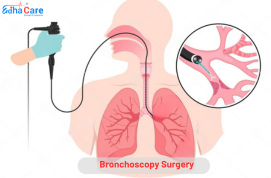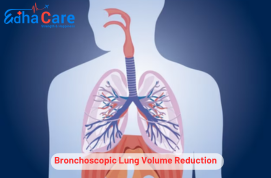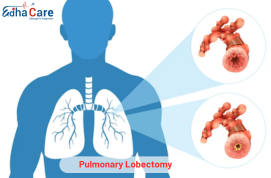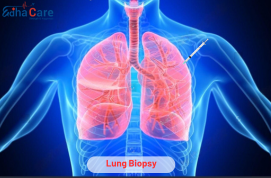Bronchoscopy Surgery

A minimally surgical procedure called bronchoscopy surgery is performed to see into the airways to either diagnose or treat a variety of lung ailments. A bronchoscopy, a flexible, thin tube with a camera and light at its tip, is directed into the lungs through the mouth or nose during the surgery. Direct vision of the airways, tissue sample collection (biopsy), foreign object removal, and treatment of bleeding, infections, and malignancies are all made possible by it. Under local anesthesia and sedation, bronchoscopy is an important diagnostic and therapeutic technique for respiratory conditions such as cancer of the lungs, pneumonia, and pulmonary fibrosis.
Book an AppointmentAbout Bronchoscopy Surgery
Symptoms: Since bronchoscopy surgeries is a therapeutic or diagnostic technique designed to look into or treat respiratory diseases, it does not inherently induce discomfort. However, following a bronchoscopy, patients may have moderate discomfort, coughing, or throat irritation; these negative effects usually go away in a few days.
Causes: Lung disorders such as cancer of the lungs, pneumonia, TB, pulmonary fibrosis, and foreign body aspiration are among the conditions that are diagnosed or treated by bronchoscopy surgery. In addition, it is used to clear the airways of blockages or foreign objects and obtain samples of tissue (biopsies) for additional analysis.
Recommendations: For the purpose to facilitate healing after bronchoscopy surgery, postoperative care might involve rest, fluids, and avoiding activities that are physically demanding. Throat lozenges or over-the-counter pain relievers can usually be used to treat any kind of pain or irritation. Antibiotics and other drugs may occasionally be recommended to treat or prevent illnesses.
Procedure of Bronchoscopy Surgery
Preparation: The patient is ready for the procedure, which may include a few hours of fasting before. Usually, a local anesthetic is used to numb the throat and a sedative is administered to assist them relax.
Insertion of the Bronchoscope: A bronchoscope is a thin, flexible tube that is guided into the airways through the mouth or nose. At the tip of the tube is a camera and light.
Visualization: The doctor may see the lungs, trachea, and bronchi with the bronchoscope. Real-time views of the airway anatomy are displayed on a monitor thanks to the transmission of images.
Biopsy or Treatment: If required, bronchoscopy instruments or techniques can be used to obtain tissue samples for a biopsy or to treat problems. This could entail cauterizing bleeding vessels, removing foreign items, or treating malignancies.
Rinsing and suctioning: The airways can be cleaned with saline solution to help dissolve mucus and increase clarity. Moreover, surplus fluid or secretions can be eliminated via suction.
Monitoring and Recording: The patient's vital signs are kept track of during the process, and the results are recorded. Significant discoveries or anomalies are recorded for additional analysis.
Recovery: Following the operation, the patient is kept under close observation in a recovery room until they are stable and completely awake. They might feel some hoarseness, coughing, or slight throat soreness, but these symptoms usually go away in a few hours. Together with discussing the procedure's results with the patient, the doctor gives any necessary postoperative instructions.
Require Assistance?
Get A Quick Callback From Our Healthcare Experts
Other Specilities We Cover

Bronchoscopic Lung Volume Reduction

Pulmonary Lobectomy




